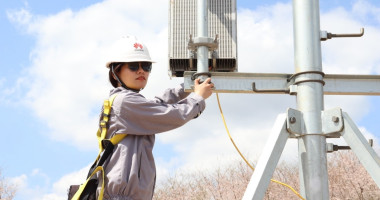Huawei is starting to look unstoppable: US sanctions and political efforts have failed to kill Huawei, which now looks in much better health than its main western rivals.
Deciding the equipment vendor is a dastardly Chinese threat, successive US governments have struck it with multiple sanctions that would have finished off a lesser company. Yet Huawei, after a difficult few years of shapeshifting, looks almost rejuvenated.
Its performance is entirely at odds with that of Ericsson and Nokia, its traditional rivals, and not what anyone would have expected a few years ago, when Donald Trump – orc leader, from Huawei’s perspective – landed the first damaging blows. Last week, it reported a 34.3% year-over-year increase in revenues for the first six months of the year, to 417.5 billion Chinese yuan (US$53.1 billion), building on the 9.6% growth it reported for 2023. Defying expectations, profitability has rebounded. Huawei’s net profit margin surged from just 5.5% in 2022 to 12.3% last year before hitting 13.2% for the recent first half.
The main purported goal of sanctions was to impede Huawei in the market for 5G network equipment, the stated fear being that its products could include Chinese government malware for surveillance or worse. Yet their main impact was on Huawei’s handset business. Generating 54% of Huawei’s revenues in 2020, it was cut off by US legislation from both Google software and cutting-edge chips, far more important to smartphones than they are to network products. Revenues halved in 2021 with the sale of Honor, a handicapped smartphone unit, and they fell another 12% in 2022.
But last year they rose 17% and a continued revival probably explains most of Huawei’s sales growth so far this year. A new handset called the Mate 60 Pro has proven a big hit in China. Teardowns have horrified US hawks by apparently revealing 7-nanometer chips, presumed to have no longer been available to Huawei. The received wisdom was that a chipmaker would need a technology called extreme ultra-violet (EUV) lithography to produce them. ASML of the Netherlands enjoys an EUV monopoly and Dutch authorities have prohibited sales to Chinese foundries. Nor, thanks to US sanctions, can Huawei buy EUV-made chips from Taiwan’s TSMC or South Korea’s Samsung.
The workaround, say experts, has been an older technology called deep ultraviolet (DUV) lithography combined with a technique called multiple patterning. It is thought to be inefficient, even unprofitable, producing much lower yields, the percentage of functional chips derived from a single wafer. When SMIC, the Chinese foundry used by Huawei, saw its gross margin shrivel 6.4 percentage points for the recent second quarter, to 13.9%, and its cost of sales spike 31.5%, to more than $1.6 billion, some analysts blamed efforts to produce 7-nanometer chips with DUV technology. Profitable or not, it seems to have worked.
